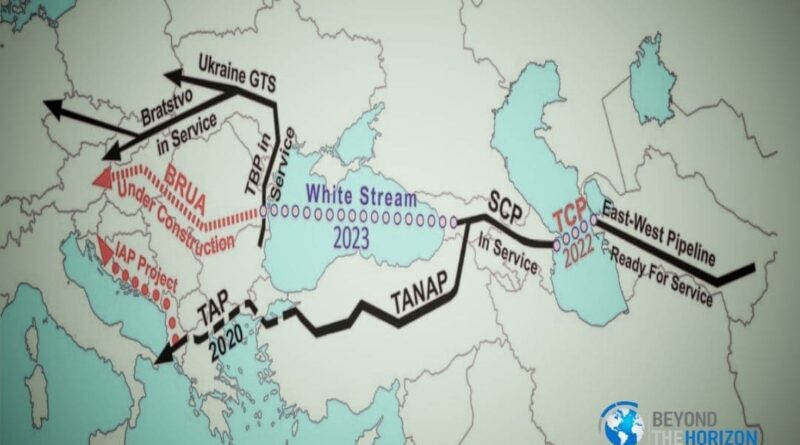US Leads Historic Peace Accord Between Armenia and Azerbaijan
Armenia and Azerbaijan’s leaders inked a peace accord courtesy of U.S.-led negotiations, lending an element of surprise given the current political climate. The signing took place in the White House and marks a decisive conclusion to a confrontation that dictated the dynamics of the South Caucasus since the 90s. Russian policymakers played a key role in influencing, intervening, and controlling this distrust between the two countries, and hence the involvement and leadership of the U.S. in concluding this saga represent a significant departure from past practices.
Armenian Prime Minister Nikol Pashinyan and Azerbaijani President Ilham Aliyev showed remarkable diplomacy in neutralizing an animosity that had been rooted in the South Caucasus since the early stage of the 1990s. Countless battles had been fought, culminating in a dramatic conclusion in 2023 when the entire Armenian populace of Nagorno-Karabakh was evacuated following a quick, decisive offensive. Thus, with the conflicts of the past echoing in the region, the peace agreement marks a significant milestone for both nations.
This groundbreaking agreement, however, isn’t just about achieving bilateral relations between Armenia and Azerbaijan. It indicates a reshaping of power relations in South Caucasus geopolitics. A significant part of this agreement includes establishing a 43.5-kilometer passage across Armenian landscapes to connect Azerbaijan directly with its Nakhchivan enclave touching Turkey’s borders.
This corridor is expected to undergo comprehensive development led by the United States and will prominently be dubbed as the “Trump Route for International Peace and Prosperity” or TRIPP. This new route, also recognized as the Zangezur corridor, will run adjacent to Iran’s northern border and it signifies murmurings of a new era on the geopolitical front.
Combined with an intensified campaign against Tehran, this corridor offers insight into how the United States is gaining geopolitical advantage in the region. It provides a strategic foothold in an area where Iranian influence has been dominant for years. Historically, Baku requested access to Nakhchivan which was refused on the grounds of safeguarding sovereignty and maintenance of relations with Iran.
The innovative solution from the United States proposes for Armenian border and customs checks to be managed by an American entity, thereby affording Azerbaijan its sought-after route and maintaining Armenian sovereignty, all while ensuring a sustained American function in the region.
This successful mediation is symptomatic of the United States reclaiming its influence in the region. It underscores the notion that the United States’ diplomatic prowess is second to none when it chooses to engage fully. The success of this endeavor implies a diminished role for Russia, a nation that had enjoyed relative control over the region for a significant period.
Armenia has always maintained a strong alliance with Russia in the Caucasus. Yet, this alliance transformed into a dependency over the years, with Russia controlling Armenia’s borders, maintaining a military base, monopolizing its energy supplies, and promising to maintain its security. However, when the tables turned in 2023 and Azerbaijan claimed victory, Russia was conspicuously absent, a fact that did not go unnoticed in Yerevan.
Since then, premier Pashinyan’s government has slowly distanced themselves from Russia whilst looking towards the West to form new alliances. Furthermore, this agreement provides an avenue for Armenia to signal a thawing of relations with Turkey, bringing an end to thirty years of economic and diplomatic isolation and creating additional connections to the West.
This deal reshapes the classic Silk Road narrative. Till now, the crucial link connecting the east and west via the South Caucasus was through the Baku–Tbilisi–Ceyhan corridor. The emergence of this accord introduces a new transit route that enhances transport alternatives and brings forth previously untapped economic opportunities.
For Armenia, this agreement is a chance to participate in regional commercial structures from which it has previously been excluded. Meanwhile, for Azerbaijan, it reinforces its position as a critical junction between Europe and Asia. The main facilitator behind these changing dynamics is Russia’s continuing engagement in Ukraine and the resulting inability to maneuver effectively in this area.
Looking forward, Washington’s intervention will not only echo within the confines of Armenia and Azerbaijan, but will also resonate with nations like Georgia that have recently warmed up to Russia. The message is explicit: Washington is back and choosing Kremlin over the will of the people could be a political gamble, especially when Washington is keen on involvement.
There are hurdles to overcome. Armenia must undergo constitutional revisions to omit references to Nagorno-Karabakh, a process that is susceptible to Russian interference. Mutual trust between Yerevan and Baku remains a challenge, and the region’s history tells a tale of peace agreements collapsing under the weight of previous hostilities. Nonetheless, this moment’s significance cannot be overstated. It’s not just about peace brokerage; the United States is infiltrating the region’s infrastructure and security–an area once dominated by Russia and Iran.

